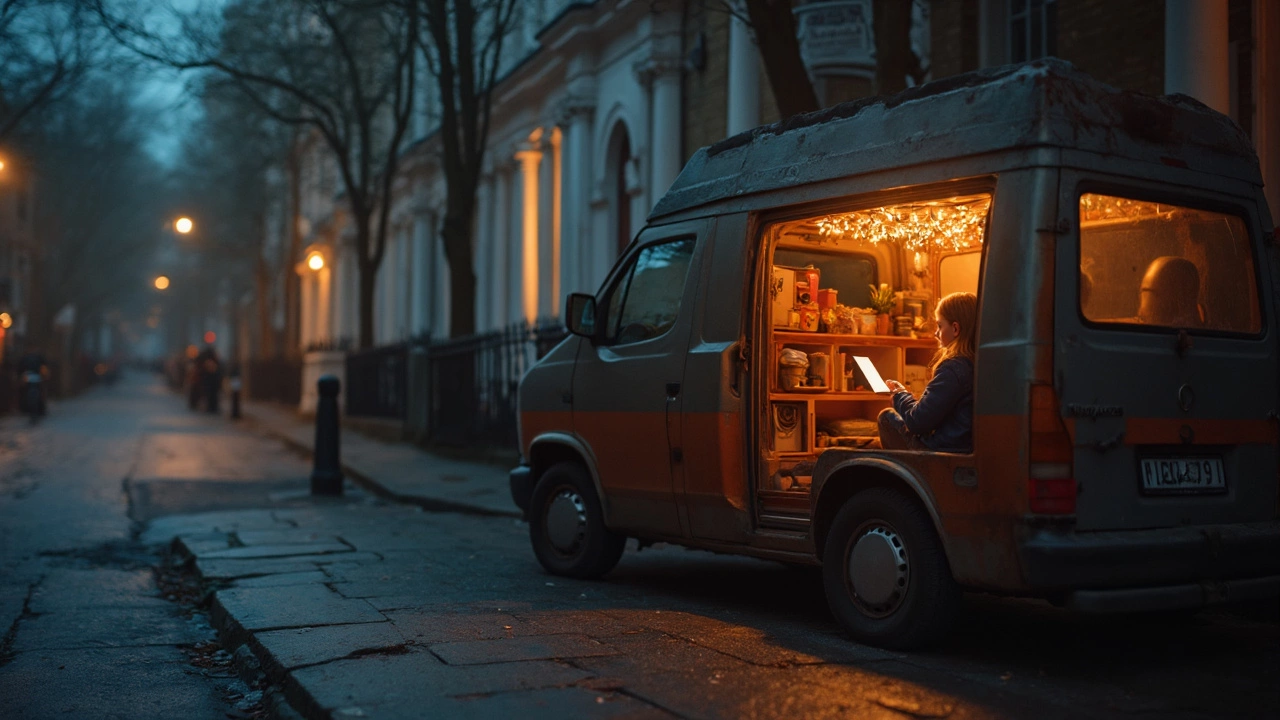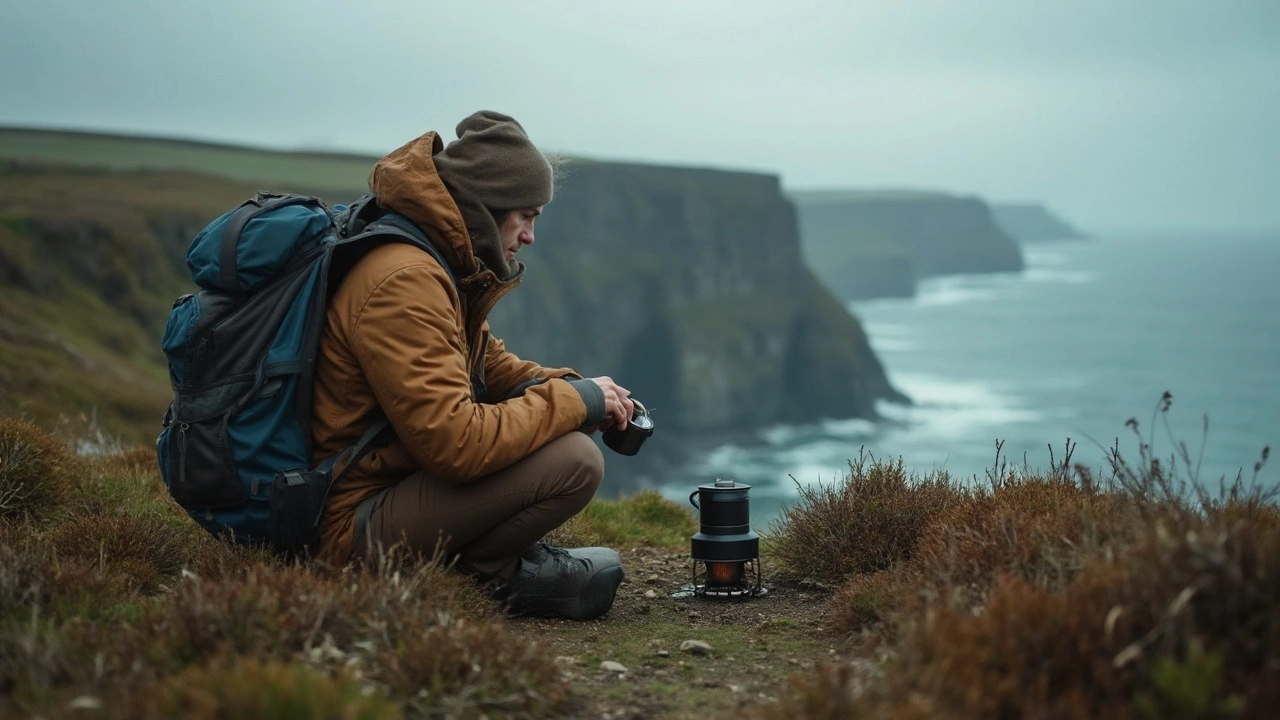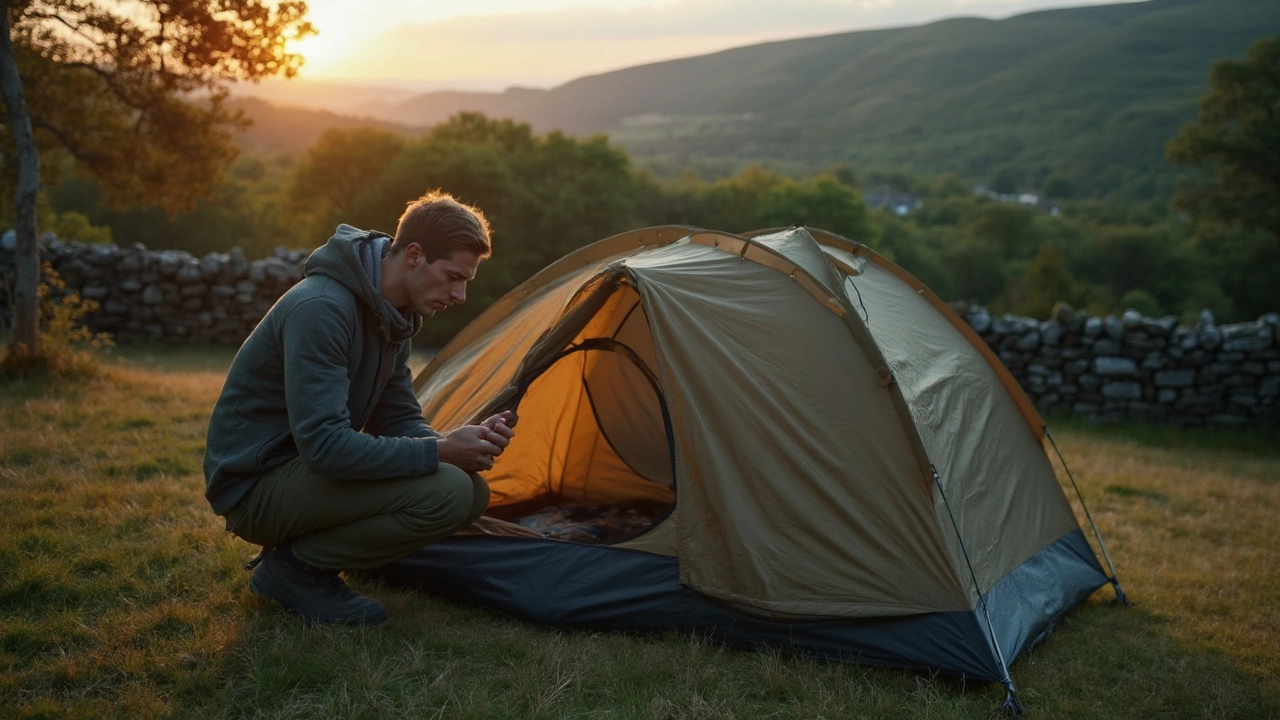Ever heard of people just quietly rolling out a sleeping bag behind a grocery store or in a little patch of woods near the highway? That’s stealth camping—sleeping somewhere you're technically not supposed to, while going unnoticed. It's kind of a game: blend in, leave no trace, and leave before anyone even knows you were around. For some, it's a way to stretch travel budgets. For others, it’s all about the freedom and adventure—and maybe skipping the crowded campsites.
Stealth camping usually means keeping it simple. No campfires, no big setups, and definitely no trash left behind. Just you, your gear, and a spot that most people overlook. More people are getting into this because it costs next to nothing and doesn’t require booking ahead or sticking to campground rules. Plus, when you really nail it, nobody has a clue you were ever there.
- What Actually Counts as Stealth Camping?
- Why Try Stealth Camping Instead of Booking a Stay?
- How Stealth Camping Connects to Eco-Friendly Travel
- Must-Know Tips for Stealth Camping Safely and Responsibly
- Stories and Surprises from Real Stealth Campers
What Actually Counts as Stealth Camping?
So, what makes stealth camping different from just regular camping or even crashing overnight in the back of your car? It’s all about keeping a low profile and choosing spots where sleeping isn’t officially allowed—think city parks after dark, behind warehouses, or a quiet corner in a parking lot. The key is that nobody notices you, and you leave the place exactly like you found it. If you can set up a tent with no one spotting you or sleep in your van without anyone knocking on your window, that’s classic stealth camping.
Most folks doing this use simple setups—small tents, bivy sacks, or vans with window covers. You won’t see lawn chairs, fairy lights, or even a fire pit. It’s not about ‘camping’ with all the luxuries but about blending in and moving quietly. Here’s what sets stealth camping apart:
- You don’t ask for permission, but you don’t make a mess or break things either.
- Usually, you arrive late and leave early (sometimes before sunrise) to avoid being spotted.
- Minimal or no “setup”—you don’t pull out your table or stove for breakfast.
- Stealth camping can happen anywhere: urban areas, forests, fields, or even along the roadside.
- The main goal: leave no trace, don’t draw attention, and don’t cause trouble for anyone else.
Here’s a quick table showing how stealth camping stacks up next to other types of camping:
| Type | Location | Permission | Amenities | Goal |
|---|---|---|---|---|
| Stealth Camping | Hidden, often urban or roadside | Usually without | None | Stay hidden, move on |
| Traditional Campground | Designated camp area | Booked/allowed | Toilets, fire pits, etc. | Recreation, comfort |
| Wild Camping | Remote nature | Sometimes legal, varies | Rarely | Solitude, adventure |
The real magic of stealth camping is that almost any traveler can try it, whether you’re in a tiny car, a campervan, or just carrying a backpack. It’s not for everyone, but if you value being resourceful and moving quietly, it might be your thing. Just remember the unspoken rule: if you get caught, move on without a fuss—don’t argue, don’t make a mess. Respect wherever you are, and you’ll rarely run into problems.
Why Try Stealth Camping Instead of Booking a Stay?
Hotel or cabin prices aren’t getting any cheaper, especially in prime travel seasons. Stealth camping throws the whole idea of paying for a bed out the window. The money you save by not booking an official campsite or room can add up fast—sometimes more than $100 a night, depending on the location and time of year.
It’s not just the price tag, though. There’s a kind of freedom that comes with picking your own spot wherever you end up. No reservations, no fixed check-in or check-out times, and no need to squeeze your plans into someone else’s schedule. If you spot a gorgeous view or find a quiet forest clearing, you just stay there. Simple as that.
- Sustainable travel: Many people worry about the environmental impact of big resorts, packed campgrounds, or even eco-friendly cottages that still use a ton of resources. Stealth camping puts you right into eco-friendly camping by keeping your stay totally low-impact and super minimal.
- Privacy: Forget noisy neighbors or crowded lots. Find your own space, enjoy some quiet, and maybe even see wildlife you wouldn’t spot anywhere else.
- Adventure factor: Every night is a tiny adventure—you never know quite what you’ll find. It’s real off-grid living, not just a buzzword.
- Flexibility: Got delayed or changed your mind about your route? No problem. With stealth camping, you’re not stuck paying for a reservation you didn’t use or rushing to make it to the next stop.
If you’re still not sure, here’s a quick look at just how big the savings can get when you choose stealth camping over booking a proper stay:
| Option | Average Nightly Cost (North America, 2024) |
|---|---|
| Hotel/Motel | $110 |
| Campground Spot | $30 |
| Stealth Camping | $0 |
For a one-week road trip, that’s a difference of anywhere from $210 (campgrounds) to $770 (hotels) you’d have left in your pocket. The perks go way beyond your wallet, but that’s a pretty good place to start.

How Stealth Camping Connects to Eco-Friendly Travel
So, how does stealth camping actually support eco-friendly camping and greener adventures? At its core, this style of travel is all about minimal impact. You’re not setting up a big tent village, marking your territory, or using a bunch of resources. Most stealth campers stick by the golden rule: leave absolutely no trace. No fire, no trash, no visible proof you ever camped there. That’s pretty much the heart of sustainable travel.
Compared to standard campgrounds, which often involve crowds, cars, and bathroom facilities, stealth camping flips the script. The whole idea is to blend in—and that means keeping your carbon footprint as tiny as possible. Skip the electric hook-ups, skip the generators, skip anything that draws attention or uses extra energy. Some stealth campers even avoid cooking to keep smells and waste down.
- Stealth campers rarely use disposable gear or single-use plastics. Packing light means being smart with reusable tools, like metal water bottles and compact stoves.
- Most stealth campers move spots each day, letting green spaces breathe and recover. This keeps areas from getting worn down, a big problem in popular outdoor spots.
- Practicing total leave-no-trace habits helps protect local ecosystems from unintended harm. Animals aren’t disturbed and plants aren’t trampled.
There’s real data that supports low-impact camping. For example, the Leave No Trace Center found that popular campsites can take years to recover from overuse, but stealthy low-key stops often show almost zero impact within a few days. That’s a huge win for sustainable travel.
The coolest part? Stealth camping can spark new habits, even when you stay at a proper site or cottage. Being hyper-aware of waste, energy use, and nature turns regular travelers into eco-friendly pros. It’s less about hiding and more about respecting every spot you visit, whether you’re wild camping or booking a green cottage next time.
Must-Know Tips for Stealth Camping Safely and Responsibly
If you’re new to stealth camping, there are a few golden rules to keep in mind. Safety matters most, but it’s also about making sure nobody can tell you've even been there. Let’s break down what actually works on the road, out in the suburbs, or even in cities where grabbing a quiet night’s sleep can get tricky.
- Pick Your Spot Early
If you wait until it’s too late or dark, you might end up someplace sketchy. Get to your area before sunset and scope it out—look for quiet spots with natural cover or parked vans. Avoid places with lots of foot or car traffic or anywhere marked "No Trespassing." - Know the Local Laws
Different places have different rules. In many cities, parking overnight isn’t allowed in certain areas. U.S. National Forests generally allow dispersed camping up to 14 days in a spot, but city parks and private property are usually off-limits. Always check local laws first, because a knock from law enforcement at 3 am is a bad surprise. - Keep a Low Profile
This is huge for hidden camping. Don’t set up chairs, lights, or cook outside. Stay inside your car, van, or tent, and keep lights dim and noise down. Some seasoned stealth campers use blackout curtains or window covers to block light. If you’re on foot, avoid brightly colored tents and go for earth tones. - Leave No Trace
This is non-negotiable, especially if you care about sustainable travel. Whatever you bring in, you take out. That means packing up all your trash, keeping the ground untouched, and not picking plants or leaving any ‘souvenirs’ behind. A small shovel for digging cat holes (if you need to go to the bathroom) comes with the territory. - Have a Quick Exit Plan
Always be packed up and ready to roll at a moment’s notice. Don’t spread out your gear. If someone asks you to leave, just move on without arguing—the goal is to cause zero fuss.
It can help to keep safety in mind at all times. Trust your gut: if a place feels off, leave. Share your location with someone you trust before settling in for the night, and keep your phone charged. It also pays to have a basic first-aid kit and some pepper spray, just in case.
| Essential Gear for Stealth Camping | Purpose |
|---|---|
| Blackout window covers | Block light, keep you hidden |
| Portable power bank | Charge your phone, lights, and devices |
| Minimalist sleeping bag or blanket | Easy setup and quick packing |
| Reusable water bottle | Stay hydrated, reduce waste |
| Small shovel/trowel | Bathroom needs, leave no trace |
| Headlamp with red light mode | Less visible light, saves night vision |
Stealth camping gets easier the more you do it. Just remember—the best stealth camper is the one nobody notices. Respect the places you stay, don’t overstay your welcome, and keep things as low-key as possible. That’s the real secret to enjoying hidden, eco-friendly camping.

Stories and Surprises from Real Stealth Campers
Real-life stealth camping isn’t just about saving cash on a road trip—there are actual adventures (and some mishaps) that folks talk about. Take Anna, who slept in her camper van right outside a chain gym in rural Oregon. She'd wake up early, sneak in for a shower, and never once got caught in the two weeks she was job hunting. On the east coast, Jack tried tucking his tent behind a hardware store and ended up chatting with a security guard—turns out, the guy secretly loved the idea of discreet, low-impact camping and let Jack stay, as long as he packed up by 6 a.m.
There's a common thread: the golden rule is “leave no trace.” Campers like these get creative with locations. Some swear by church parking lots or business parks after hours, while others go for the edge of public parks or quiet beach pull-offs. According to a 2023 survey by the Vanlife Facebook group (with over 100,000 members), about 45% of folks who travel in vans or converted cars have stealth camped at least once, and almost 15% say it's their go-to way to camp. That’s not just people roughing it—it’s a movement among sustainable travel fans and people who care about treading lightly.
| Stealth Camping Spot | Reported Success Rate | Notable Pros/Cons |
|---|---|---|
| Retail Parking Lot | 60% | Access to WiFi; risk of being moved on |
| Rest Area | 80% | Bathrooms often available; noise level high |
| Urban Residential Street | 30% | Hiding is tough; higher risk of complaints |
| Behind Small Businesses | 70% | Quieter; can be awkward if discovered |
Some people learn the hard way that not every spot is safe—one couple in Colorado picked what looked like a quiet forest turnout only to wake up surrounded by early morning mushroom foragers. Another lesson that comes up: check the signs. Just because a place is empty at night doesn’t mean overnight parking is allowed. One eco-friendly camping enthusiast got a ticket for not noticing the “no overnight stay” fine print at a city park.
Funny enough, many stealth campers say the best spots are found by accident. One group discovered that the back row of a hospital parking lot, right under the lights, felt safer than any dark alley. Most agree on this: stay humble, be quiet, and never, ever leave even a gum wrapper behind. Word travels—and so does the spirit of stealth camping, as more people find their own ways to camp light, disappear quick, and see the world on their own terms.
